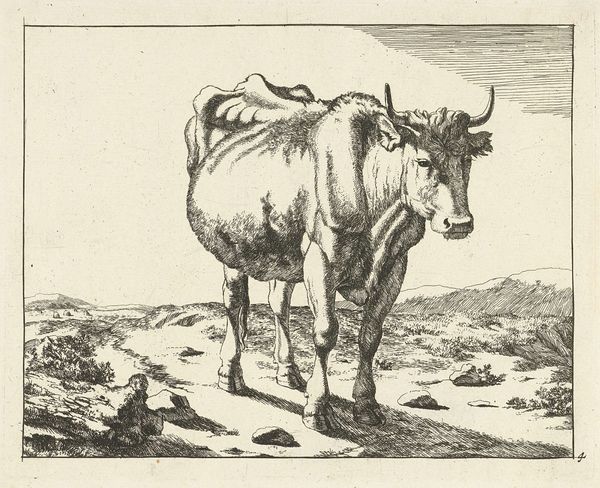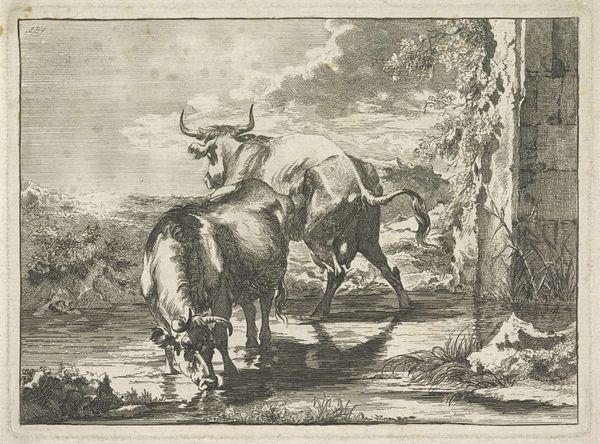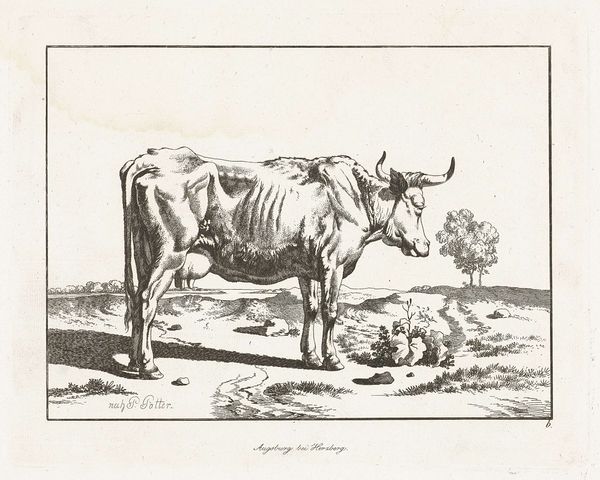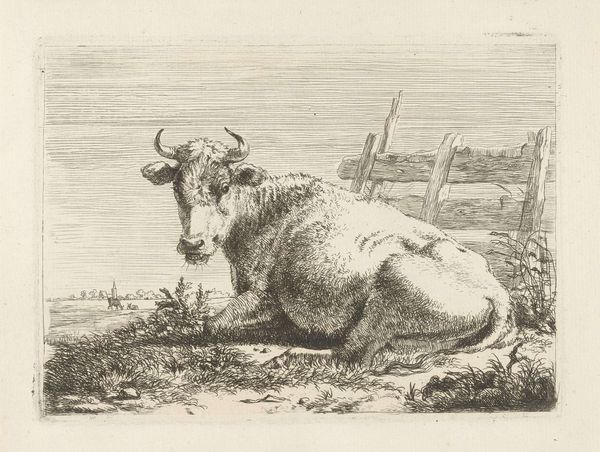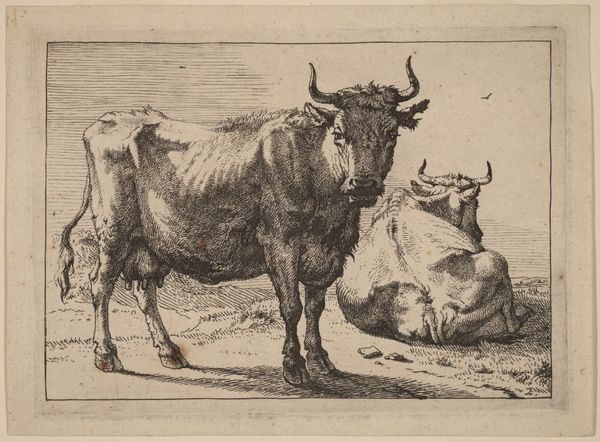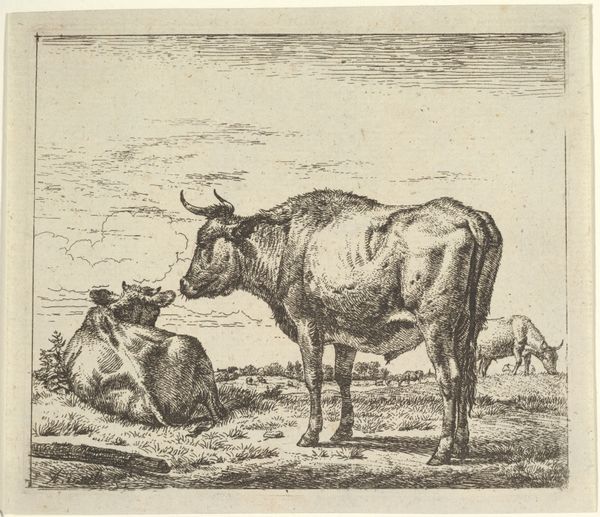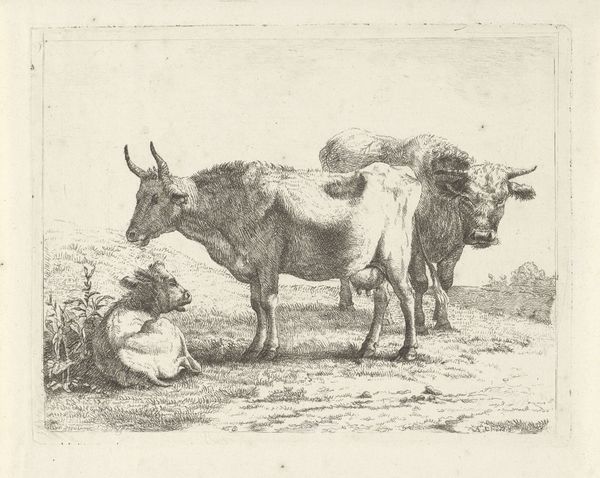
Two Roman Bulls Resting, from Die Zwiete Thierfolge 1800
0:00
0:00
drawing, print, etching, paper
#
drawing
# print
#
etching
#
landscape
#
figuration
#
paper
#
pencil drawing
#
realism
Dimensions: 184 × 251 mm (plate); 199 × 266 mm (sheet)
Copyright: Public Domain
Editor: Here we have "Two Roman Bulls Resting, from Die Zwiete Thierfolge," created by Johann Christian Reinhart around 1800. It's an etching printed on paper. It’s so detailed! What do you make of it? Curator: What strikes me is Reinhart's choice of etching, a printmaking process involving acid, to depict these bulls. Consider the labor involved in producing the copper plate, applying the ground, incising the image, and finally, the printing process itself. How does this mechanical reproduction impact our understanding of nature, of the animal, represented here? Editor: That's an interesting angle. I was more focused on the animals themselves and their peaceful rest in an Italian landscape. Does the setting give any clues? Curator: Absolutely. The Italian landscape, carefully rendered through etched lines, speaks to a specific social and economic context. Think about the agricultural labor these animals represent. Their resting state here belies their role in production, in shaping the landscape itself. Do you think this scene celebrates the animals, or is it referencing something deeper, maybe the economic engine that sustains the artist and his patrons? Editor: So you're saying the image of bulls resting is tied to the back-breaking work they perform? I never considered that. Perhaps the artist wanted to critique the societal dependence on labor. Curator: Precisely. Or perhaps highlight the value, even the dignity, of labor within a changing social landscape. How can we see this piece not just as art, but also as a commentary on materials, production, and labor in early 19th-century Europe? Editor: I now see beyond the peaceful scene, the focus shifts towards the processes and systems around it. It gives the drawing a different depth. Curator: Exactly. By examining the materiality of the artwork and its social context, we can better understand its complexities.
Comments
No comments
Be the first to comment and join the conversation on the ultimate creative platform.



